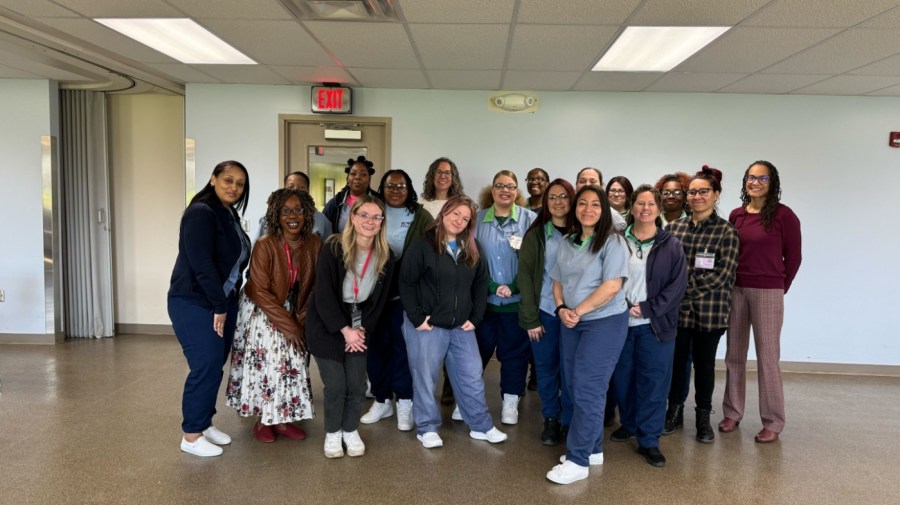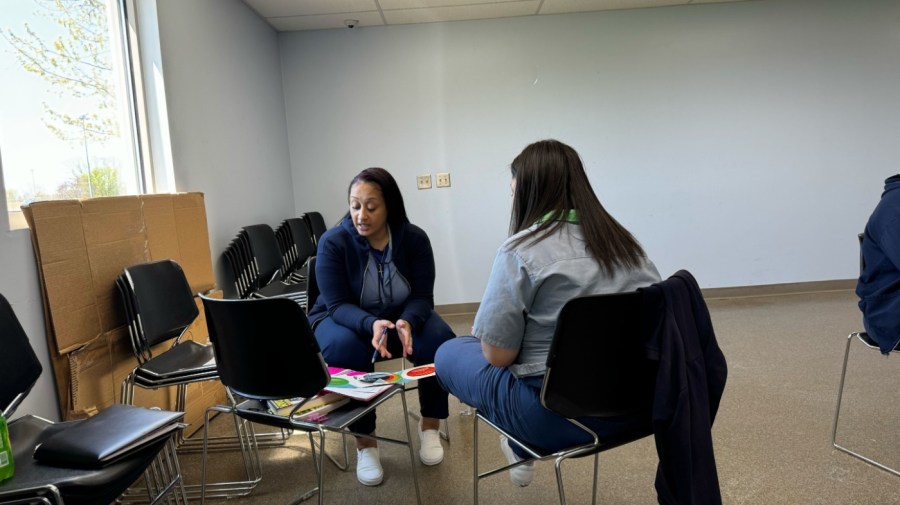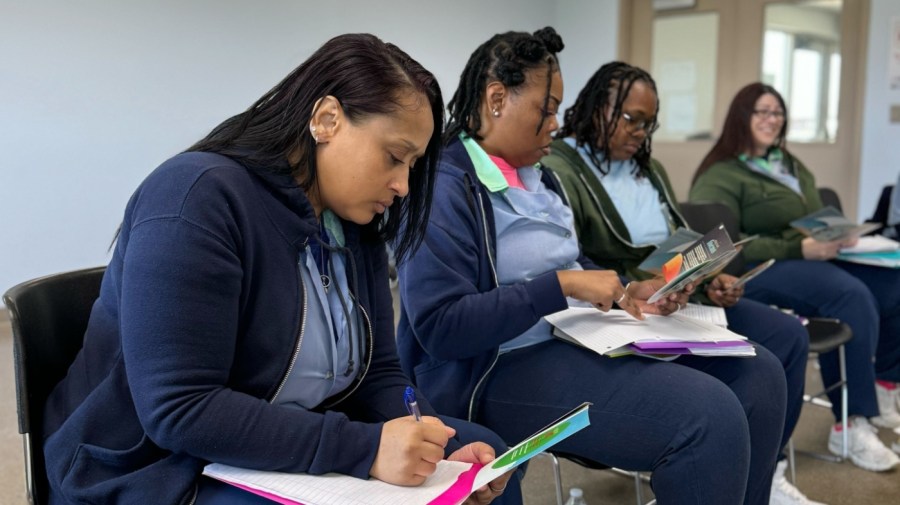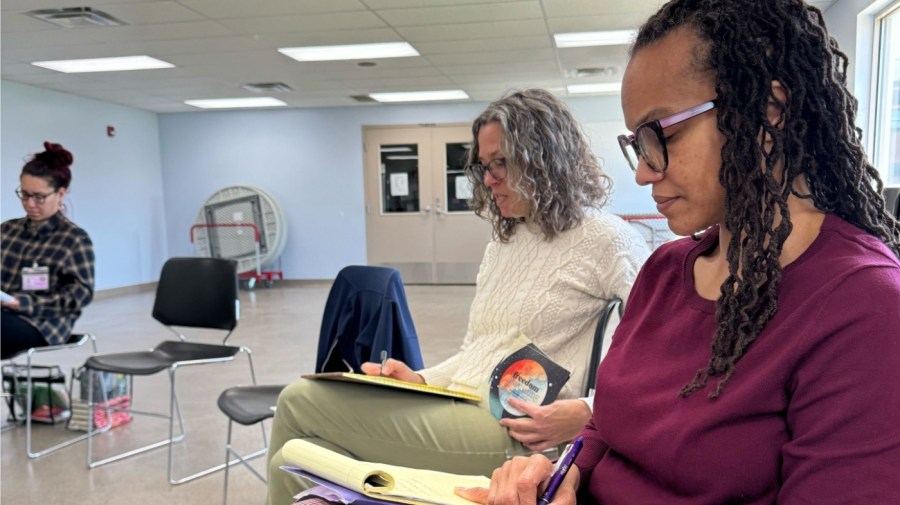Prison education programs ready to expand, but new Pell Grants slow to arrive
MARYSVILLE, Ohio — The incarcerated women looked eager as they gathered outside the building where they would attend a course on Black feminism.
The class of 11 convened last month in a room at the Ohio Reformatory for Women (ORW) that was mostly empty except for chairs, with one big desk with a computer on it for an administrator.
“We are all hungry for knowledge,” Amber Swain, one of the inmates, told The Hill.
The course, one of several offered at the prison, will be part of a discussion Monday with a group of Ohio State University professors as the school looks to ramp up its prison education degree program following the implementation of Pell Grants for prisoners last summer.
Mary Thomas, director of Ohio State University’s Ohio Prison Education Exchange Project, told the class the meeting is an opportunity for the professors to learn from them as much as the other way around.
“The Ohio State University just received its accreditation for a new degree site at the Ohio Reformatory for Women. The degree will be a Bachelor of Arts in women’s, gender and sexuality studies. This summer, OSU will submit an application to the U.S. Department of Education for Pell Grant utilization at the site to begin in academic year 2025-2026,” Thomas said. “We are currently exploring funding opportunities to begin next academic year, so we may begin in autumn semester 2024.”

Last summer, the Department of Education announced it would allow Pell Grants for prisoners again, after they were barred from the money since 1994.
Thomas said every individual education program has to get countless approvals — from the prison system, the school they’re working with, the state government and at last the Department of Education — making the process a slow and laborious one.
“I know one program who has been waiting for approval from the [Department of Education] for five months,” she told The Hill.
The effort to get Pell Grants to prisoners started back in 2015 under the Obama administration, when the Second Chance Pell Experiment began. That program gave federal funding to a limited number of incarcerated people to pursue their education.
Then, in 2020, Congress voted to repeal part of the 1994 Pell, allowing for access to the grants to be greatly expanded. When the FAFSA Simplification Act was passed in 2020, it defined what a prison education program would be and what qualifications a program needed to get that title.
The first step toward prisoners getting Pell Grants is for the classes they attend to get approved as a federal prison education program (PEP), and applications for that approval opened in July.
But the Education Department has so far approved only one institution as a PEP: the California State Polytechnic University’s Humboldt’s Bachelor of Arts in communication at Pelican Bay State Prison, though it hopes to approve 50 more by 2025.
A department spokesperson said more resources will become available soon to help programs apply for the PEP.
“The Department expects to have data about the PEP once participating schools offering approved programs have reported information about confined and incarcerated students enrolled in a PEP. The Department expects to be able to report PEP data — at the earliest — fall 2024,” the spokesperson said.
In the meantime, Ohio State has been offering free courses to the women at ORW, who had to go through an interview process to be selected due to high demand.
Swain said she has also taken gender studies, African American history and creative writing courses with OSU, emphasizing the classes will “not only help when I get out” but that they are useful in prison as she “unlearns societal norms.”
The students at ORW range from women who are in prison for just a few years to those with a life sentence. This group has read four to five books on Black feminism since August.
Arianna Cannon, who is incarcerated for 15 years to life, says “anything that we adapt, we pour back into our communities” and that their education “impacts the people we meet and have in our lives.”

Studies have shown education programs reduce recidivism rates, and Thomas emphasized how even those serving life sentences can affect the prison culture and create a more stable environment.
“The expansion of Pell Grants is just beginning to rectify some of the damage caused by the near-total elimination of higher education programs in prison after 1994,” said Marc Howard, a professor of government and law at Georgetown University, during a recent discussion about prison education with the Brookings Institution. “For nearly 30 years, incarcerated people have had extremely limited access to college, leaving them with almost no avenues to pursue a higher education. We can’t even begin to measure the negative impact of decades’ worth of lost opportunities.”
During the ORW class, the women were told by Tiyi Morris, a professor of African American studies at OSU, to split off into groups to discuss what topics they would be presenting at the workshop with the school’s other representatives.

When they pulled the chairs back in a circle, the women had many different ideas, such as discussing mass incarceration, transphobia, homelessness, climate change and classicism, among other subjects.
They sounded anxious about having to present to professors, with one inmate drawing general agreement when she exclaimed, “How am I going to teach a teacher?”
The women broke off into groups again to talk about what “freedom dreaming” meant to them after reading “Freedom Dreams: The Black Radical Imagination” by Robin D. Kelly. Freedom dreaming is defined by a focus on what a person wants the future to be and what tools they need to make that a reality.

Inmate Danielle Ennis said, “No one has ever asked me that question before,” specifically mentioning the life she wants to see for her daughter.
“I closed my eyes and realized the future of what I can do here and now, but also what I can do in the future,” Ennis said.
Copyright 2023 Nexstar Media Inc. All rights reserved. This material may not be published, broadcast, rewritten, or redistributed. Regular the hill posts








